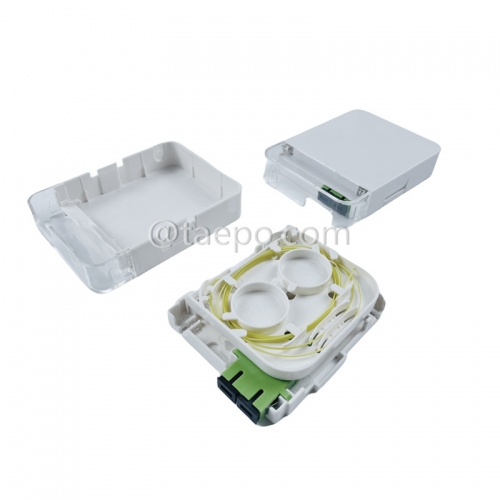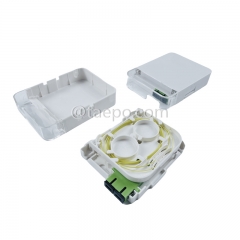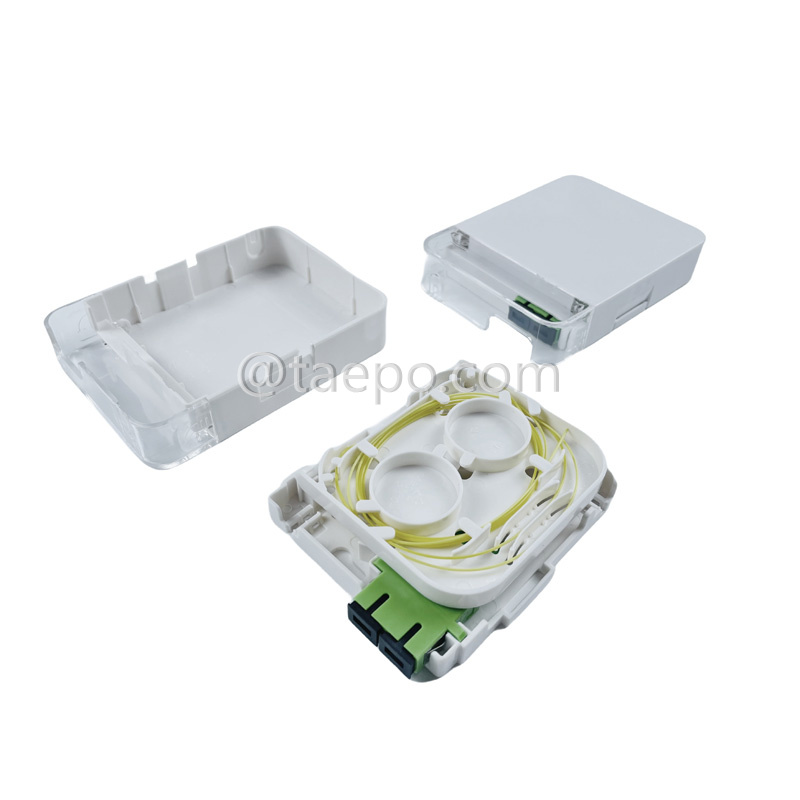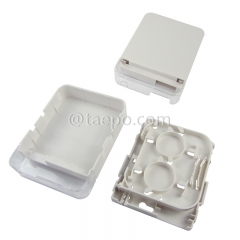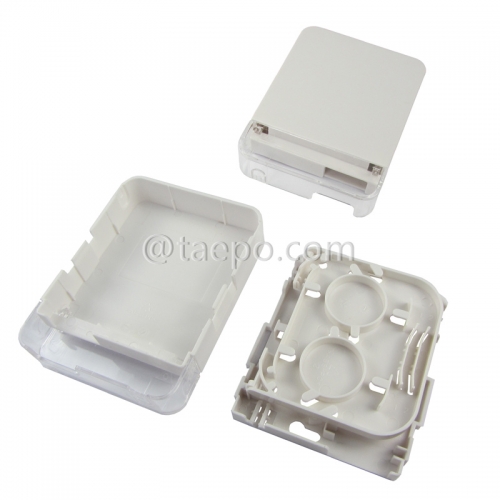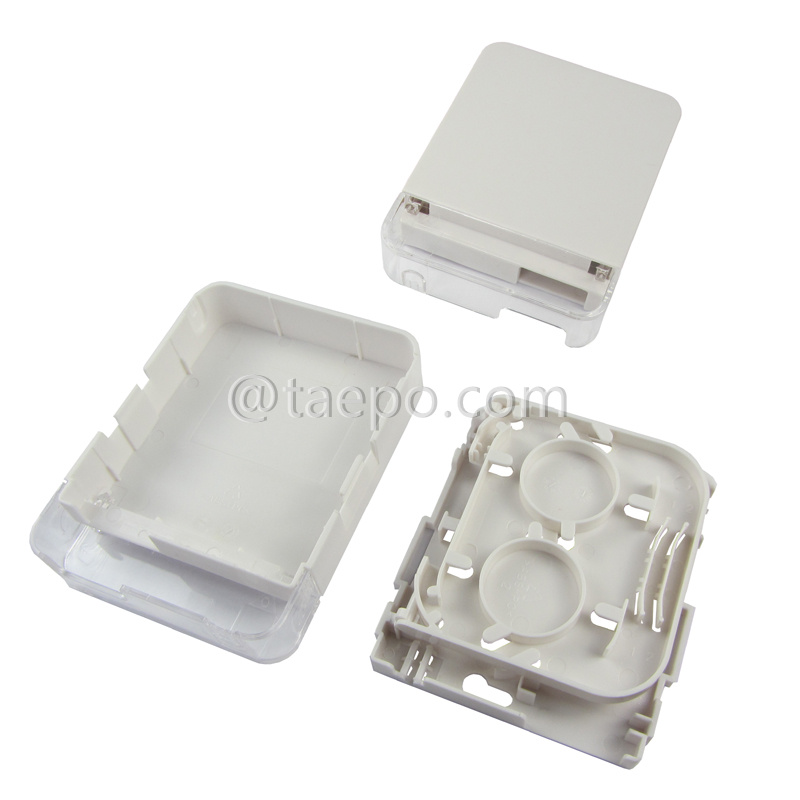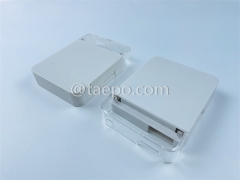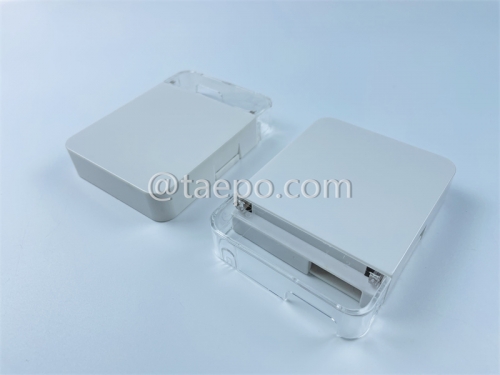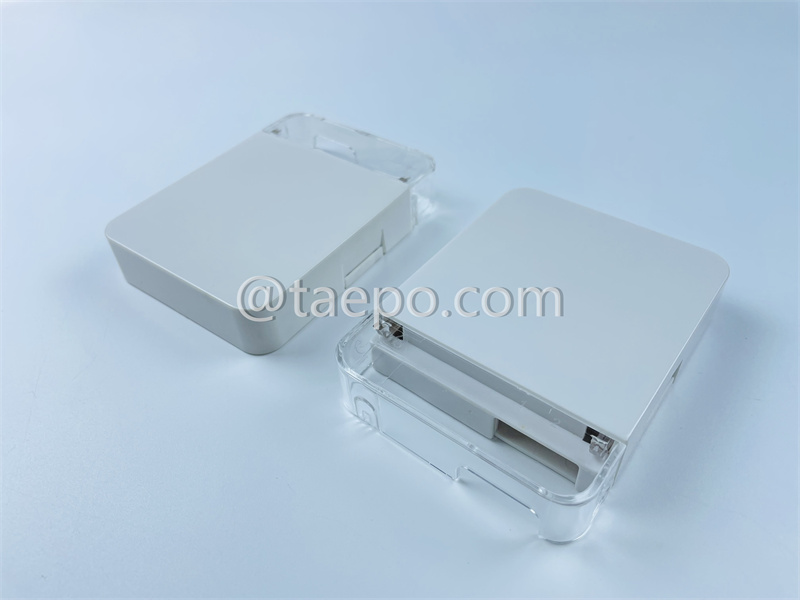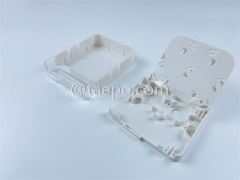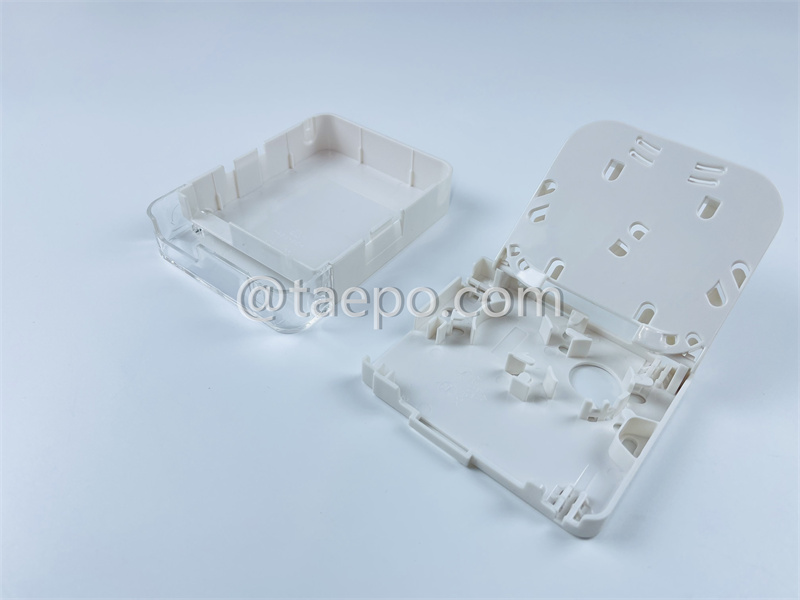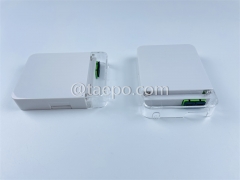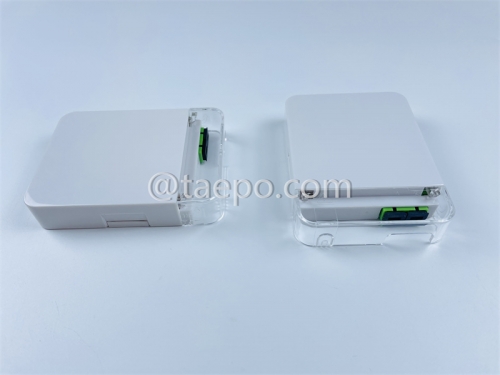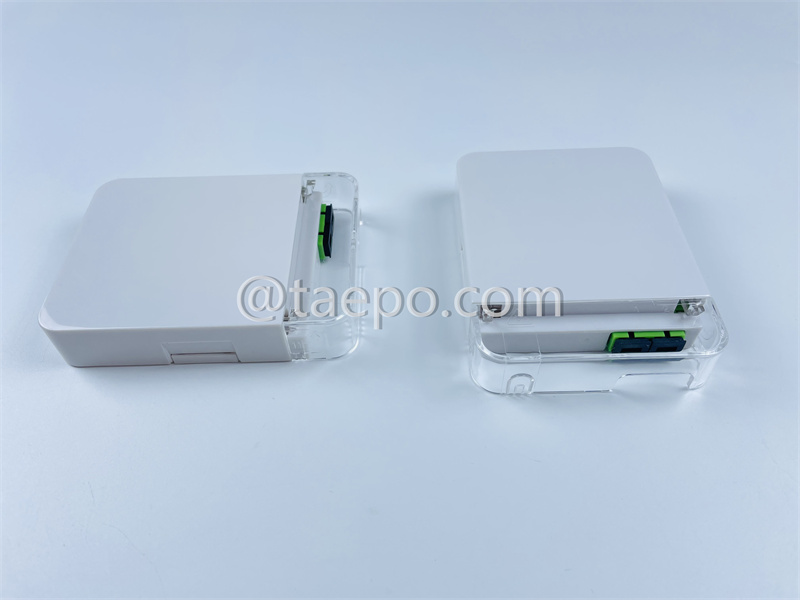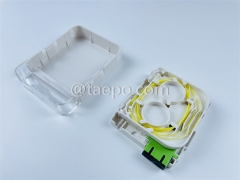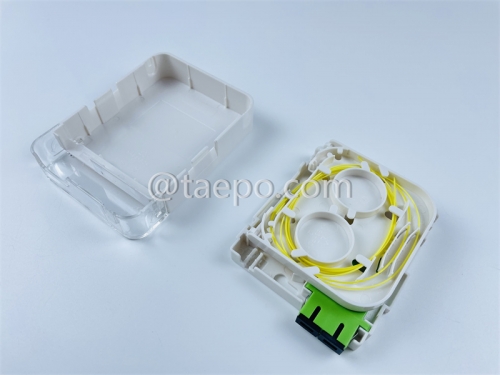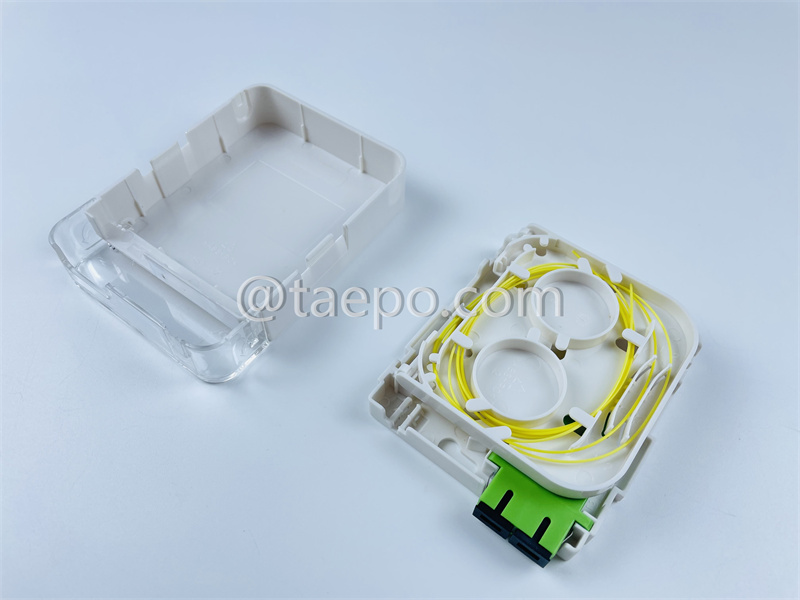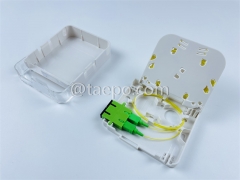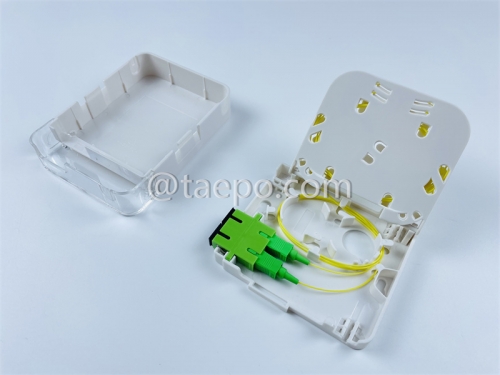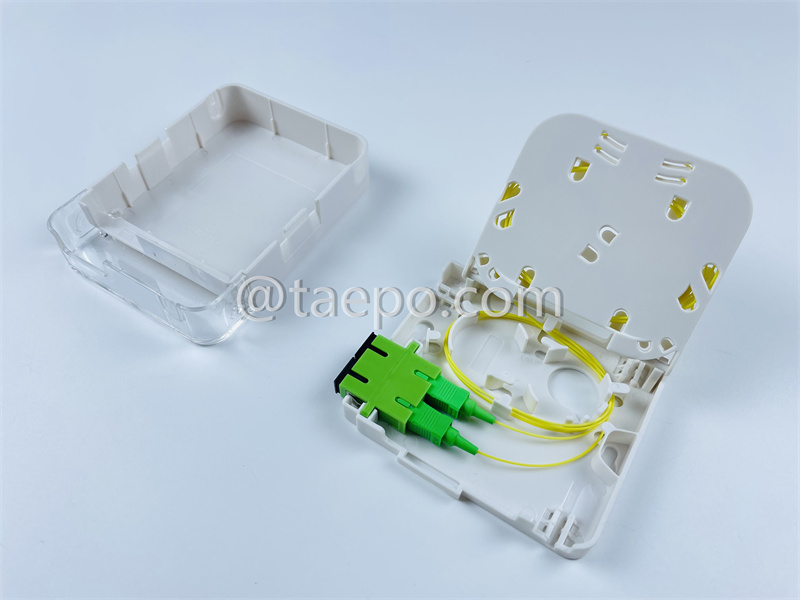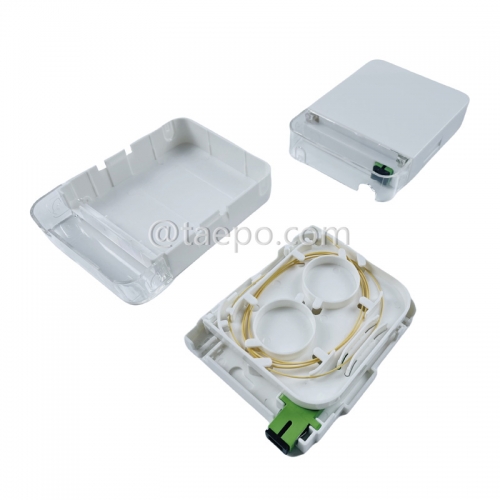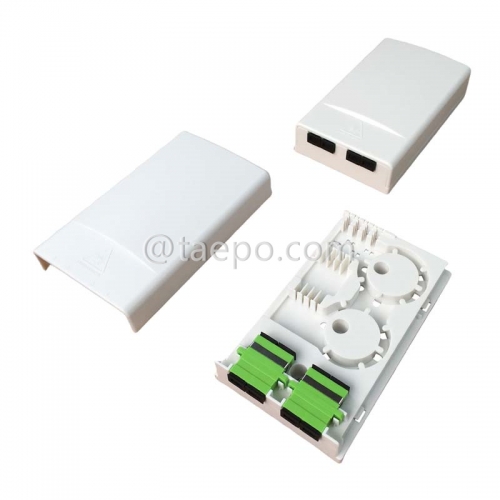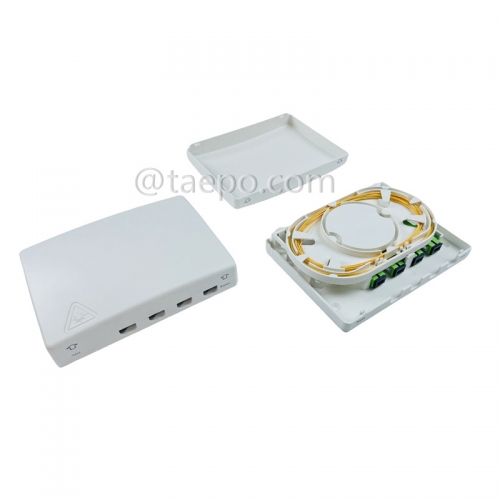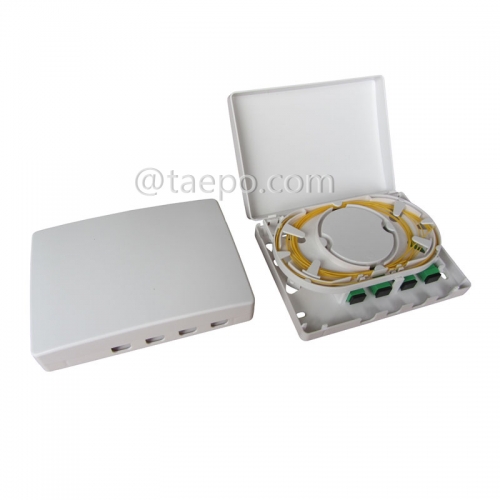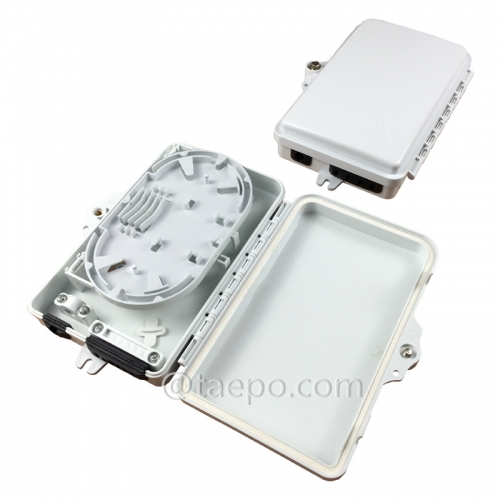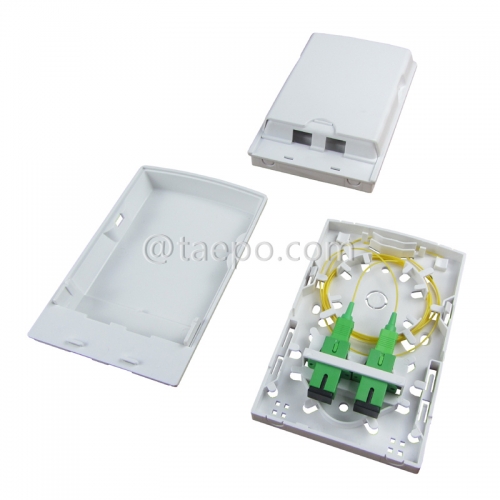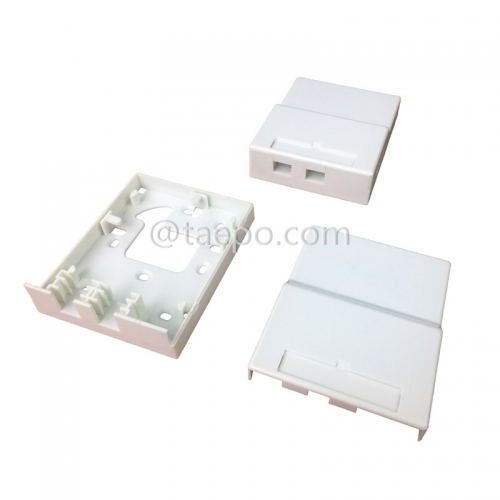Descriptions
Question 1 : What is fiber splice cassette ?
Answer : A fiber splice cassette is a device used to organize and protect the splices of fiber optic cables within a fiber optic enclosure or distribution panel. We TAEPO has an Indoor SC 2 fibers plastic FTTH (Fiber to the Home) fiber optic termination box, also known as an FTB box, also known as "fiber splice cassette" is a device used to manage and terminate fiber optic cables within a residential or commercial setting.
Here’s a breakdown of the key components:
Indoor: Designed for installation inside buildings, providing a safe and organized environment for fiber connections.
SC2 Fibers: Refers to the type of fiber optic connectors used. SC (Subscriber Connector) is a standard type of connector known for its push-pull mechanism. "2 fibers" indicates that the box can accommodate two fiber strands.
Plastic: The box is typically made of durable plastic, which helps protect the fibers from physical damage and environmental factors.
FTTH: This acronym stands for Fiber to the Home, a network architecture that delivers high-speed internet directly to residential locations using fiber optic cables.
Termination Box: The box serves as a termination point where the fiber optic cables are connected to equipment or additional cables, facilitating the distribution of internet signals.
These boxes are crucial for organizing and protecting fiber optic connections, making them essential components in FTTH installations.
Question 2 : How does a fiber splice cassette work ?
Answer : A fiber splice cassette works by providing a secure and organized way to hold and protect spliced fiber optic cables.
Here’s how it typically operates:
Preparation of Fibers:
Before using the splice cassette, the fiber optic cables are prepared by stripping the protective coating and cleaving the fibers to create clean, flat ends.
Insertion of Spliced Fibers:
The prepared fibers are inserted into the splice cassette. The cassette usually has designated slots or trays for holding the fibers and splices.
Splicing Process:
The actual splicing is done using either mechanical or fusion splicing techniques. In mechanical splicing, the cleaved ends of the fibers are aligned and held together using a gel or adhesive. In fusion splicing, the fibers are joined using heat.
After splicing, the fibers are placed in the designated slots within the cassette.
Securing the Splices:
The cassette typically features mechanisms, such as clips or trays, to securely hold the spliced fibers in place. This prevents movement and minimizes the risk of damage or signal loss.
Protection:
The design of the splice cassette protects the splices from environmental factors, such as dust, moisture, and mechanical stress. This is essential for maintaining the integrity of the optical signal.
Cable Management:
The cassette helps with cable management by organizing fibers neatly, preventing tangling, and allowing for easy identification of individual fibers. It may also include features for labeling and identifying fibers.
Integration into Enclosures:
Once the splices are secure and organized, the splice cassette is typically housed within a larger fiber optic enclosure or distribution panel. This enclosure provides additional protection and facilitates connections to other fiber optic components.
Overall, a fiber splice cassette is crucial for ensuring that fiber optic splices are securely managed and protected, contributing to the overall reliability of fiber optic communication systems.
Main Features
The main features of an Indoor SC 2 fibers plastic FTTH (Fiber to the Home) fiber optic termination box typically include:
Compact Design: Designed for indoor use, it is usually small and space-efficient, making it easy to install in residential or commercial environments.
SC Connector Compatibility: It is equipped with SC (Subscriber Connector) ports, allowing for easy connection and disconnection of fiber optic cables.
Fiber Management: The box provides organized storage and management of fiber optic cables, helping to prevent damage and maintain performance.
Termination Point: It serves as a termination point for fiber optic cables, allowing for the splicing of incoming fibers to the internal network.
Protection: The plastic casing protects the internal components from dust, moisture, and physical damage.
Easy Installation: Designed for quick and straightforward installation, often with mounting options for various settings.
Labeling and Identification: Many models feature labeling options to help identify different fibers and connections.
These features make it a practical solution for managing fiber optic connections in FTTH installations.
Schematic Diagrams
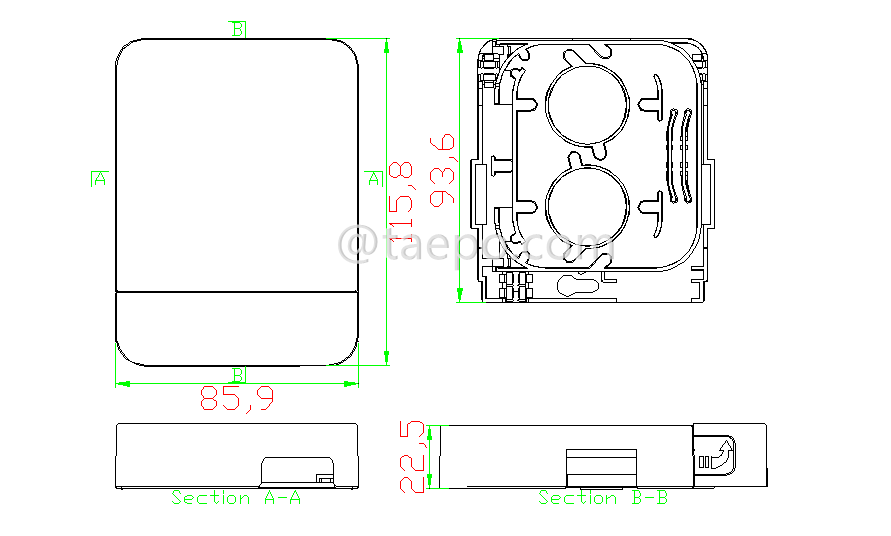
Packing Pictures
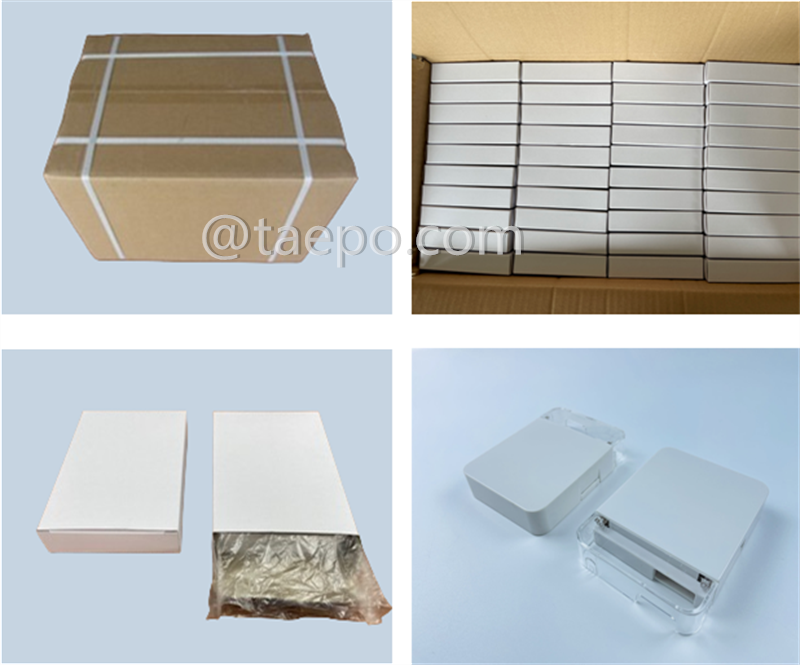
Order Data
| Item No |
Descriptions |
| TP-3323-2 |
Fiber termination box (FTB), indoor, SC, 2 fibers, plastic housing, 115x86x22mm, without adapters, pigtails |

